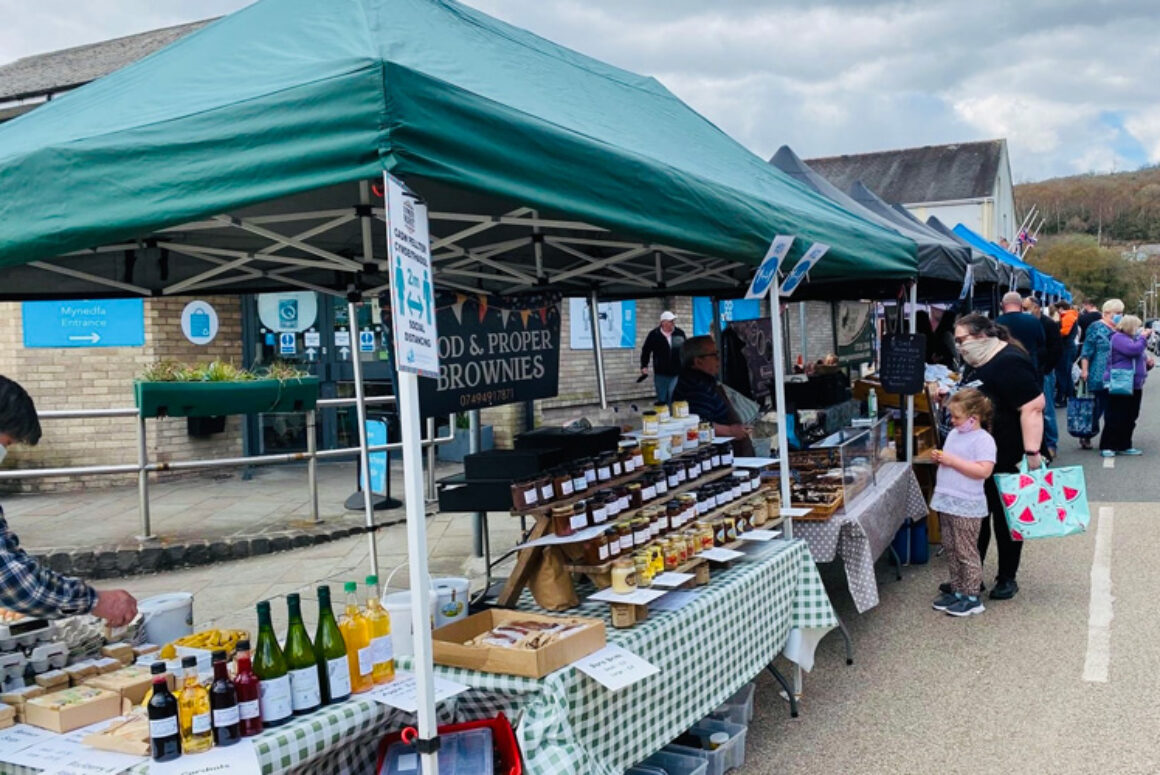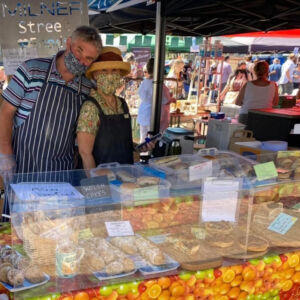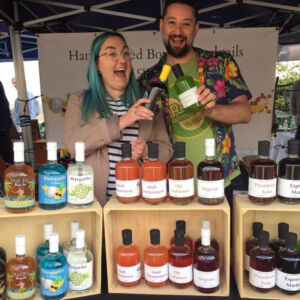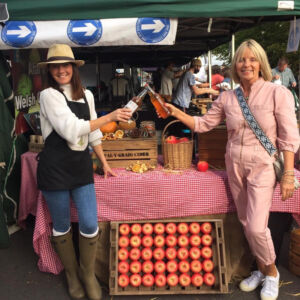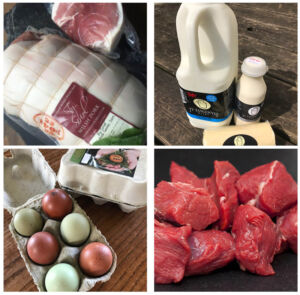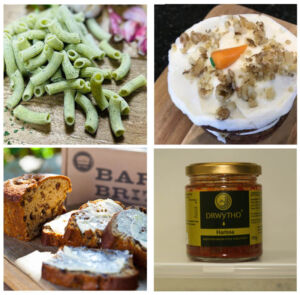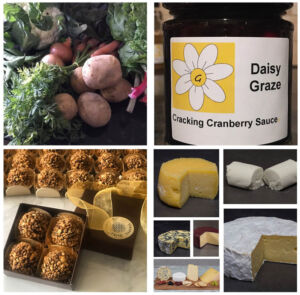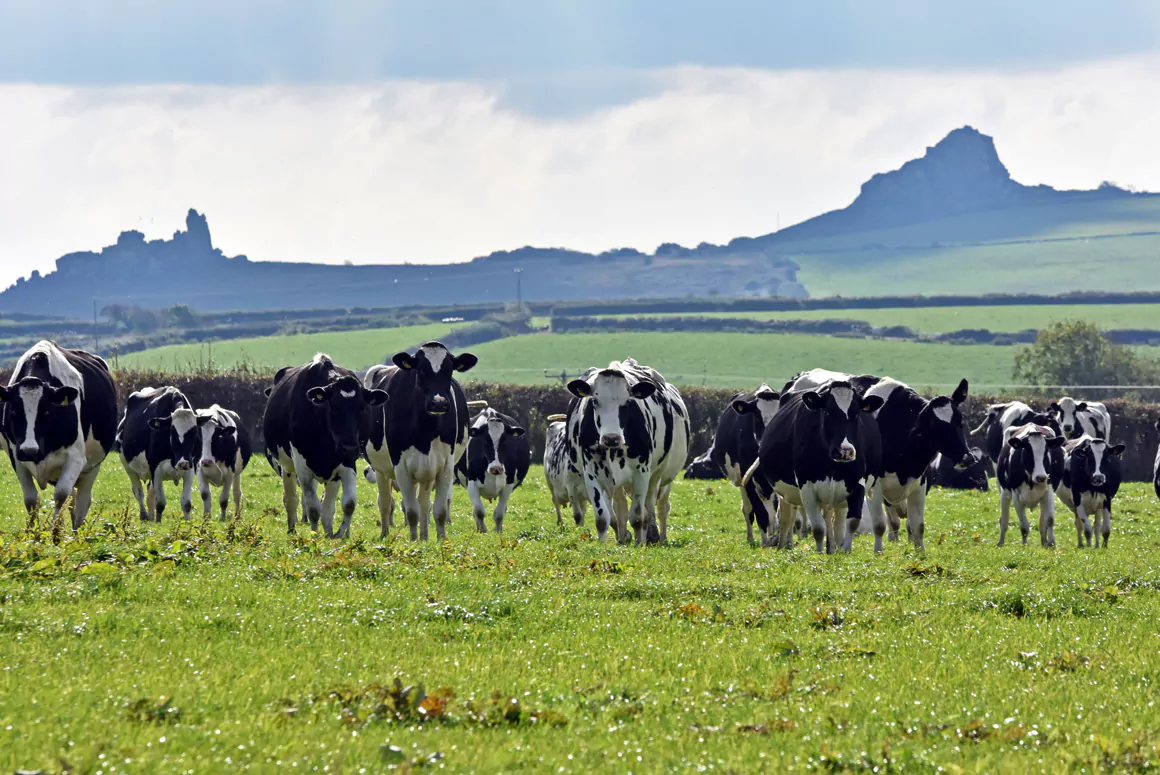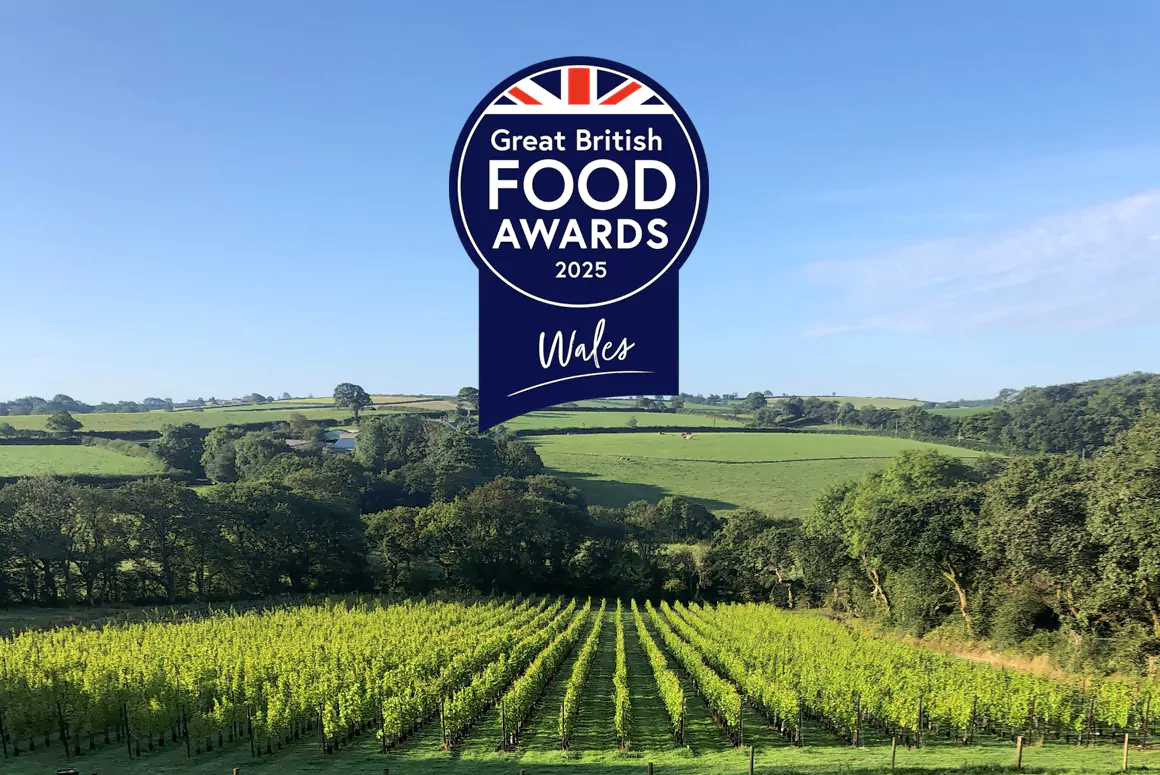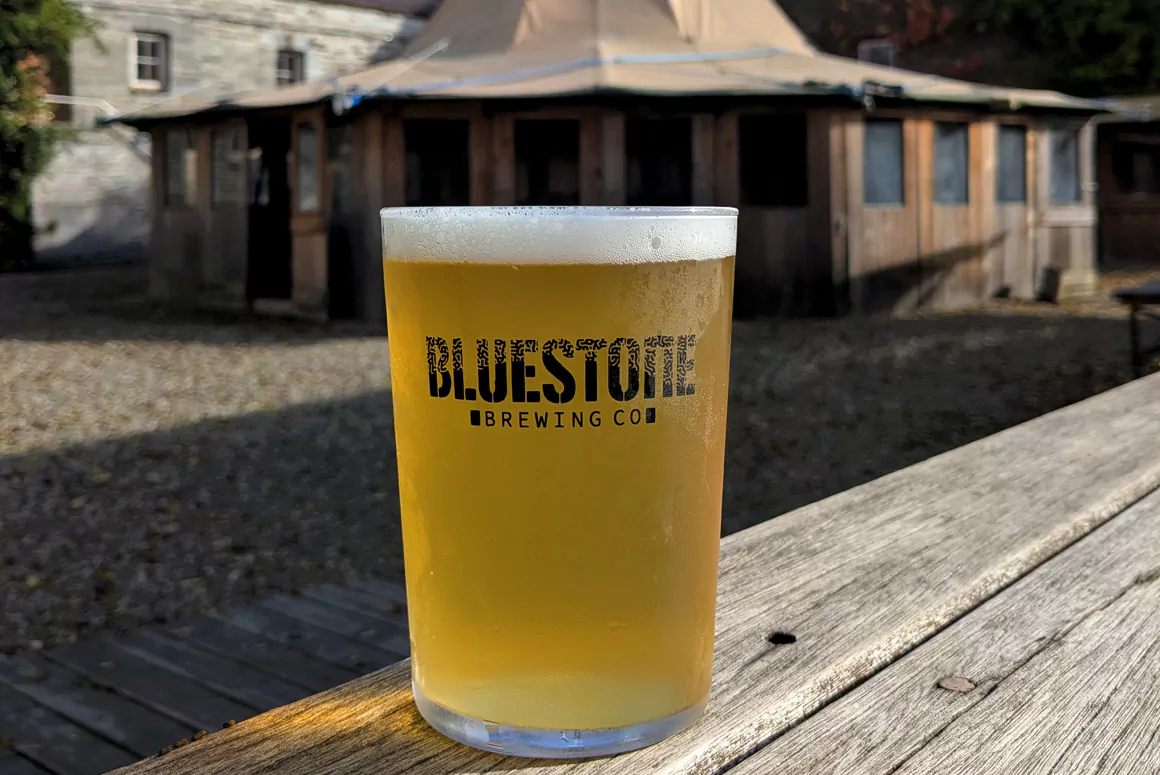![]()
Farmer’s Markets, sounds different but actually they are Local Produce Markets or even Community Markets but all run very similarly. Carol Adams, organiser of Riverside Markets in Cardiff commented:
“Buying from our markets also means you know that you’re supporting independent farmers and producers and keeping every pound you spend circulating in our local economy.”
This so concisely applies to all of these type of markets.
Farmer’s Markets can be of varying size, some part of a group of markets others just individual markets. Wales has at least 38 markets of them spread across the Principality. These bring trade and footfall not only to the producers selling at the market, but the town or community that it exists in, be that an urban conurbation or a wildlife park. A full list of markets and dates can be found at welshcountry.co.uk/farmers-markets-in-wales
Urban Foundry are a creative regeneration agency based in Swansea and run five markets including the award winning Uplands Market. They very succinctly commented:
“The markets have created a job, generate significant spend in the areas in which they operate, raise profile of the local areas, encourage people to shop locally and support local traders to sell their goods and services. Several traders have used the markets as a springboard to develop their businesses, moving on to supply local businesses and set up their own stores.
We (Urban Foundry) aim to
- Bring quality Welsh produce to the community;
- Increase footfall in the areas we operate;
- Provide opportunities for small, independent artisan Welsh producers;
- Demonstrate the value of and new qualities of public space;
- Contribute to Swansea’s cultural offer; and
- Contribute to a more sustainable Swansea by:
- Reducing imported goods and lowering food miles;
- Supporting local producers in Wales;
- Contributing to public health with more fresh produce options; and
- Improving the balance of public space between pedestrians, cyclists and drivers”
Again these comments logically focus on Swansea, but certainly apply to any other venue.
Over the years Farmer’s Markets have gained and lost popularity but Cardiff Riverside Market and Uplands Markets each have four satellite markets are now well established surviving recent Covid and its associated lockdowns.
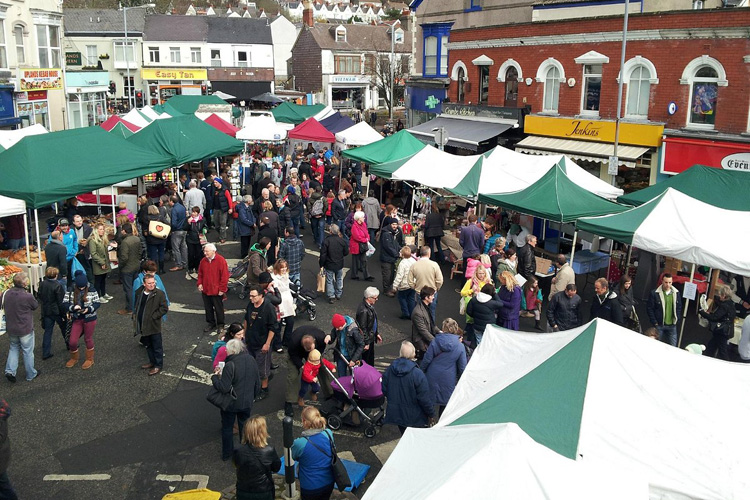
More from Uplands Market
Other markets have sprung up quickly setting a regular market place. One example is Kenfig Nature Reserve KNR Farmer’s Market which started in 2021. Set up by three producers, this has rapidly become a popular fixture. This market has taken the idea of a Farmer’s Market as a day out to the next level. It is not in the middle of a town or village with natural footfall but on the edge of a nature reserve. It does have the advantage of good car parking and it operates on a Sunday. Thus it creates a great family day out whilst supporting up to 32 local food and drink stalls.
Another recently set up market that also operates on a Sunday is Talley Pop Up Market. This is a very small market and is growing gradually, whilst satisfying a particular business objective. Cothi Valley can be regularly seen at St Dogmaels Local Produce Market and Aberystwyth Farmer’s Market, but lacked a really local market to them. Lynn Beard of Cothi Valley tells the story of the market:
“Back in January 2020 we started toying with the idea of doing a pop-up in our village, Talley. We sold very little of our produce near to home and a spot outside of the old pub in the village looked like a good place, plus we knew the people who lived there, which is always handy! It was just going to be us and we planned to start at the beginning of March, but typically three weekends of storms thwarted our efforts to get going so the date moved back and back until Sunday 22nd March, yep the day that lockdown was announced to commence on the 23rd. Little did we know what was ahead but we had never been so nervous setting up a market. Bearing in mind that we have sold at some big venues and events, but on that morning in our own village, on our own was very, very worrying. What if no one comes? What if they don’t like our goods, imagine the gossip! What if no one has seen the posts on Facebook etc? Well we needn’t have worried, we soon relaxed into it and, yes, people came. We were so chuffed at the success of our little ‘Pop Up’ and for the next few weeks we carried on alone. Then friends with rare-breed meat joined us and during that fraught summer of 2020 we had queues going along through Talley village. We were even nominated and received a certificate for our community work during Covid.
“Even better we are still going strong, with ourselves and Elmos Kitchen, with their vegetables and fruit are there every week. John James comes monthly with his Welsh Black beef, plus a fortnightly visit from Dolwerdd Dairy Sheep with their sheep cheese. The Pop Up is still well supported not only by locals, but from further afield and visitors to the area.”
As can be seen the venue of the market can be so important which is proven by Lampeter Market. Historically Lampeter Farmer’s Market was based in the back streets of Lampeter next to a small national supermarket car park but with little natural footfall. This was superseded by Lampeter People’s Market which was held in the town’s Victoria Hall again not alongside natural footfall but with perseverance did survive. Organiser Dinah Mulholland tells their story:
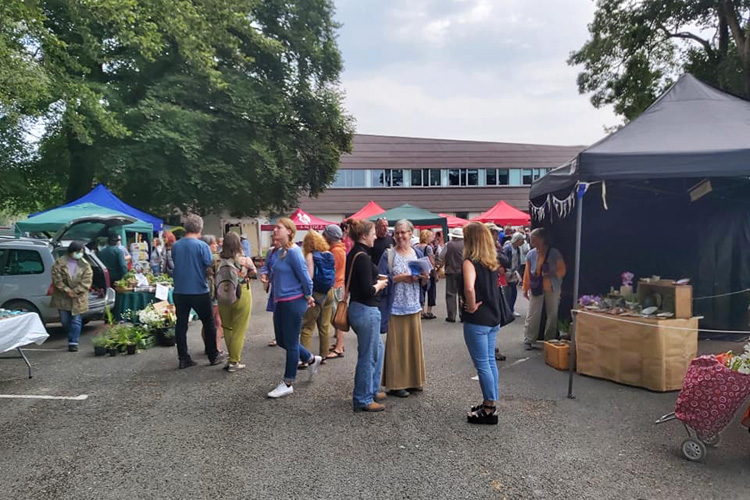
“Lampeter People’s Market moved out of Victoria Hall after the first lockdown in March 2020. We were trading first of all in the car park at the back of the hall, then at the Rugby Club car park and then early in 2021 the University agreed for us to relocate permanently on the Lampeter University campus, in the Canterbury Building Car Park at the Harford Square end of town. At his stage we also rebranded as Marchnad Llambed – Lampeter Market, although lots of locals still refer to us as the People’s Market! We still have the same ethos as before, supporting local primary and secondary food producers(1) and quality local crafters and helping to build and sustain a strong local economy.
Since we relocated footfall has massively increased, as has the number of and the quality of our traders. We are now running at approximately 25 traders per market on average and for our special seasonal markets i.e. Christmas Market and Lampeter Late Night Christmas Shopping we had 35+ traders. Also, in December 2021 we won the UK Slow Food Welsh Market of the Year 2021 award, so all in all it has been a very successful period for us. Clearly customers feel safer shopping outdoors and I think that is because the market is such a social event we provided a valuable and safe space for many local residents to socialise while they shopped over the lockdown period. But also I think markets just need to be outside and in town centres and we have, as I have said, thrived since we have moved outdoors and into the town centre.”
It is so difficult to make sweeping statements about Farmer’s Markets and there will always be exceptions. Having said that Farmer’s Markets tend to follow the chimney pots, shown by well over 60% of Farmer’s Markets in Wales being either along or south of the M4 corridor.
Looking at markets in north Wales, they have a slightly different perspective and objective. Their objectives are no less laudable, indeed one could argue that community is often more at their heart. We look at three markets starting with Beaumaris Artisan Market which comprises over 25 Welsh artists, crafters and food and drink producers. With Barista coffee, hot food, nearby parking, access for wheelchairs and pushchairs, plus dogs being welcome this creates a great community area and tourist hotspot.
Ruthin Artisan Markets was set up as a Community Interest Company in 2020 and in their own words:
“In an effort to increase footfall to our town and to help our small businesses to increase their visibility in the area and get their names out there. We host approximately 60 stall holders per event and we even have a lovely food court area where after the market you can sit and have a drink (alcoholic, or not) and either hot or cold food and peruse our pickles and jams and our amazing fruit and vegetable stall. We have some food and drink for everyone.”
This may be a new market in its present format, but is held in the grounds of the gaol and Nantclwyd y Dre. This is a Grade 1 listed house in Ruthin, and Wales’s oldest dated timbered town house, so is ideal not only for the community but also tourists.
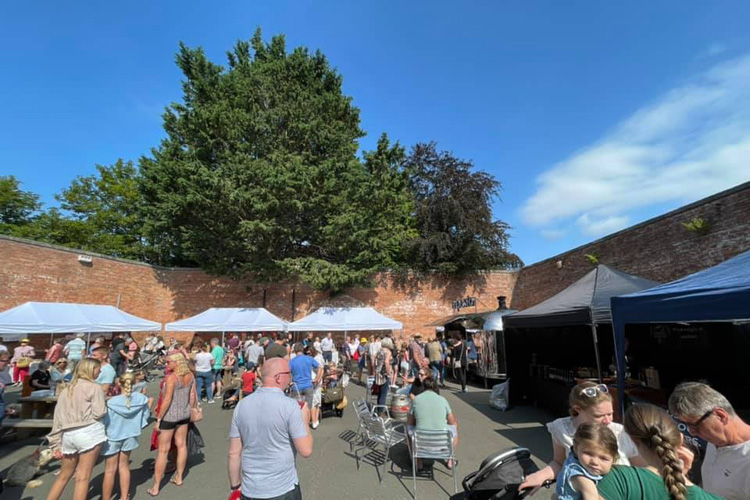
A little nearer the English border is Mold Farmer’s Market and Natalie Griffiths told Welsh Country about their market:
“Mold Farmer’s Markets is a small Farmer’s Market that strives to support small local businesses, whatever stage of business they’re at. A great variety of good quality local produce including handmade pies, organic eggs, fresh fish, local chocolate, fresh cakes, chutneys, relishes, sauces as well as jams and marmalades. We also have fresh fruit and veg sourced locally by Huson’s Farm, who have a great and varied selection of produce that they bring to the market.
We’re also very fortunate to offer a wonderful platform for our local crafters. It’s this selection that makes the market so diverse and means that we offer something here for everyone.
We also have a brilliant service, run by Jan and Chris, of a small seated area where customers can enjoy a homemade cake and cup of tea or coffee. This element of the market really adds to the atmosphere and means the market welcomes customers to become part of the set up. We often have regulars who come every time, for a cup of tea and catch up with the stallholders. More than just a market trip!”
This last comment that it is “more than just a market trip” really sums up one important aspect of Farmer’s Markets, but there are many more benefits.
So what is the history of Farmer’s Markets?
One could start 5000 years ago with the first recorded markets. Or, one could start in the middle ages with by then established livestock markets and droving to the cities from Wales to England. Or, one could start in the middle of the 19th century when railways meant that instead of transporting livestock, transporting meat carcases became the norm. Whenever one considers the start in every market town where there was a mart, there was also a produce market of some sort.
In the 1920’s a group of Yorkshire Farmers set up a co-operative selling their meat and milk at local markets. This co-operative metamorphosed a number of times eventually becoming the Associated Dairies & Farm Stores Ltd which we now know as ASDA.
Through the middle of the 20th century local livestock markets dwindled and the associated produce markets alongside them could not survive.
Farmer’s Markets as we recognise them now started in the USA around the 1970’s. It is said that at this time food in USA passed through six hands and travelled 1300 miles from producer to the household.
In the UK the first Farmer’s Market was started in Bath in 1997 and the first recorded Farmer’s Market in Wales was the Vale of Glamorgan which started in 2000. Although this has changed over the years, it is now established as the Vale Market in Cowbridge and has just started a satellite in Dinas Powys.
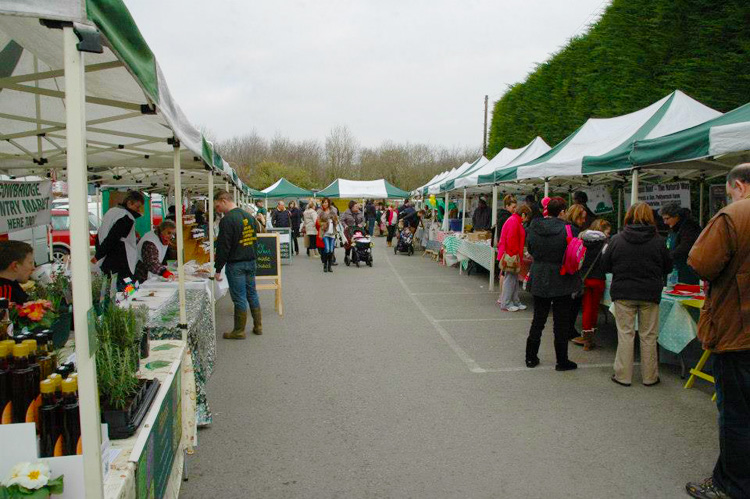
More from Cowbridge Farmers Market
So why are Farmer’s Markets so important?
Firstly let’s look at the sustainability and environmental aspect which affects both producers and us the customers alike. Firstly the supply chain to the Farmer’s Market is not only short, but one could argue is virtually non-existent. All primary producers(1) take their own farm produced goods and sell it to you the customer with no wholesaler or any third party involved. The secondary producers(1) buy in raw ingredients, again not using wholesalers or third parties before they sell their products to you. As a consequence food miles are kept to the minimum which surely should now be one of our main objectives.
Again looking at both producers and customers but with a more subjective and unseen benefit, spending locally means that the vast majority of the money spent at markets tends to remain locally which helps the wider local economy.
One aspect that is double sided, is that the customer is meeting the producer. From the customer’s aspect this means they can ask questions about traceability and what is exactly in any product plus so many other questions, including how to use or cook. Add to this there is often the occasion to taste before you buy giving the customer the opportunity to try something a little different.
From the producers point of view they are meeting their customers and meeting their fiercest critics, but also meeting their biggest fans. These customers can in turn tell their friends. The producers can test new flavours or new products and get immediate feedback as to whether it will have market appeal, be a likely winner or a loser.
As can be seen from the comments of the market organisers the Farmer’s Market is also a place to socialise. To shop with ease with perhaps a sit down with friends to enjoy a coffee, cake and a chat. This can be mentally such a good pressure valve relief which again proves how good Farmer’s Markets are for the wider community. This mental easing also applies to the producers. Working for yourself can be an incredibly lonely occupation and business issues can be discussed and so often sorted when talking to other producers. With customers telling you that they love your products really does make life worthwhile, because in the kitchen you never tell yourself that you’ve made the very best product!
But what about the wider aspect of trading at a Farmer’s Market?
All traders / producers have to be registered with their local authority and have Food Hygiene ratings displayed on their stand. This qualification means that the producer understands about food hygiene and safety and that they and their premises have been checked by their local environmental health officer.
Farmer’s Markets provides a great springboard for new and smaller producers. Some producers, as seen previously, grow exceptionally such as ASDA. and at some stage leave the Farmer’s Market scene, giving the opportunity for another young business to take its place in the Farmer’s Market. But some producers are more than satisfied to ply their trade locally and there is nothing wrong in that.
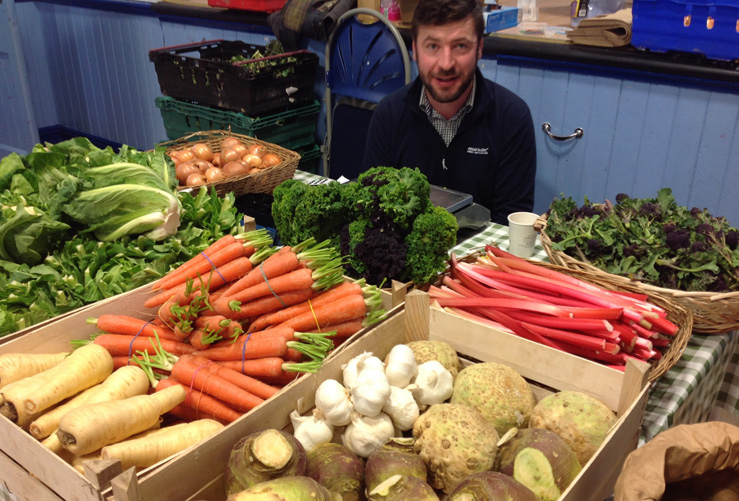
Whether the producer wants to conquer Wales and then the world or remain with their ultra local trade is irrelevant because both help to create a vibrant local market which attracts local customers and also tourists during the season.
Farmer’s Markets are a vital cog in the wider ‘food tourism’ which is vital to the Welsh economy. Nobody visits Wales to buy products that are readily available on their own supermarkets shelves. This was demonstrated beautifully with a producer called Foxhill Preserves with St Dogmaels as their main Farmer’s Market outlet. During lockdowns a family who regularly visited north Pembrokeshire to holiday were obviously restricted from doing so. When on holiday they regularly bought Blood Orange Marmalade from Foxhill Preserves which was one of the reasons they kept visiting the area. Obviously the family had run out and missed their delicious spread on their breakfast toast so contacted Foxhill to see if on this occasion they could mail order.
No Government body can measure this sort of benefit, to the County or town or Wales as a whole and no Health Authority can measure the benefit of community support given by Farmer’s Markets. Maybe it is time that they all started to do so.
Farmer’s Markets are vital to Welsh Food and Drink as a whole, vital to the food tourism of Wales and vital to the local communities that they operate in. Providing a springboard for new – small – innovative producers, providing a place for us the public to see news foods new flavours to try them and buy them.
We urge you to find time to go to your local Farmer’s Market enjoy the community the food and drink that comes from your local community. The ideal family experience for a few hours.
1 – Primary producers are those the sell products from their own farm or smallholding eg cheese eggs meat. Secondary producers are those that buy in base ingredients adding value to create a homemade product cakes coffee roasters etc.
As ever there are always anomalies take a jam maker that makes jam from their own fruit but obviously has to buy sugar which they cannot grow themselves.


